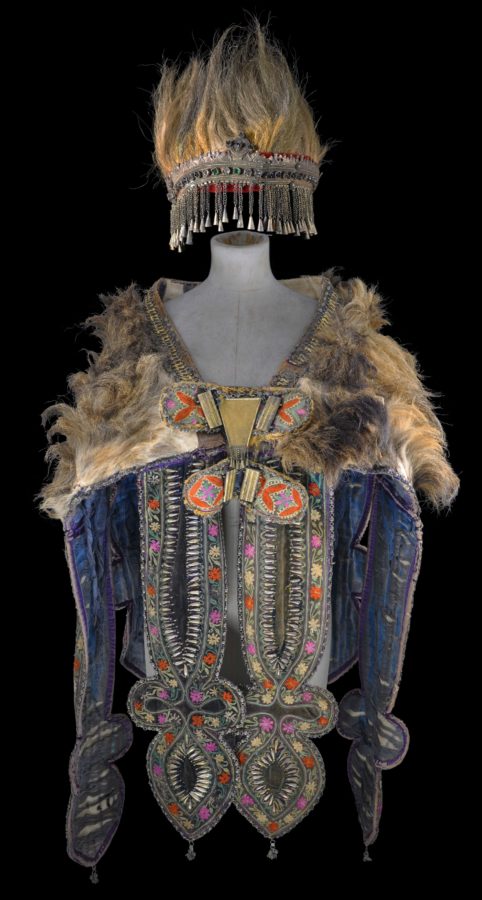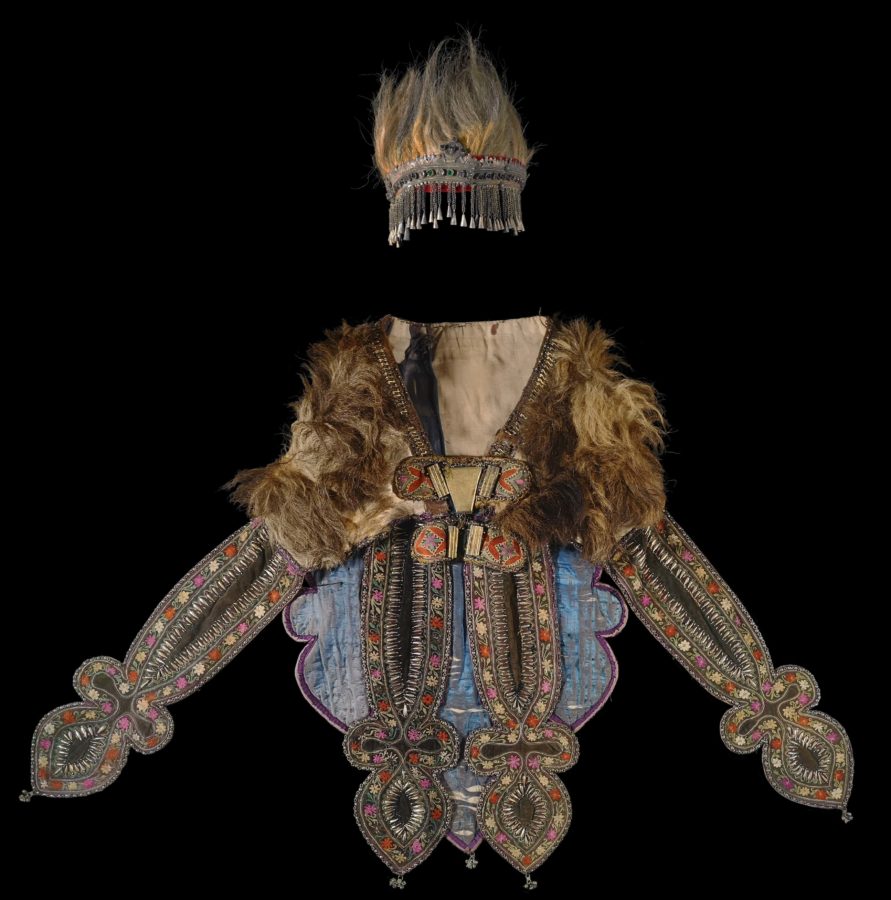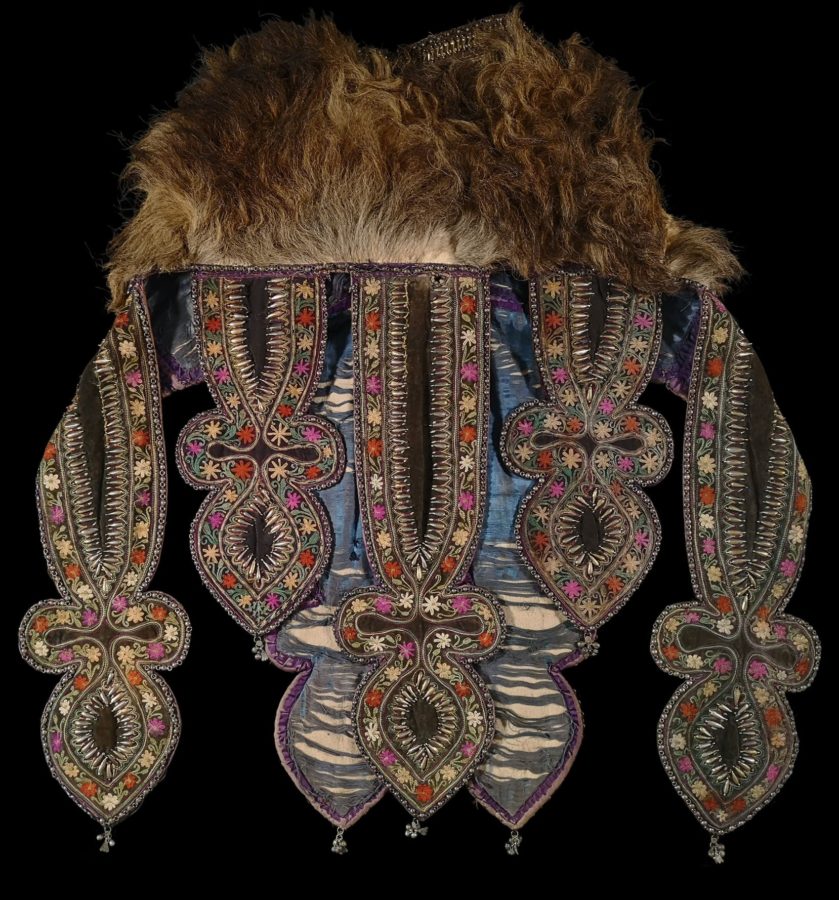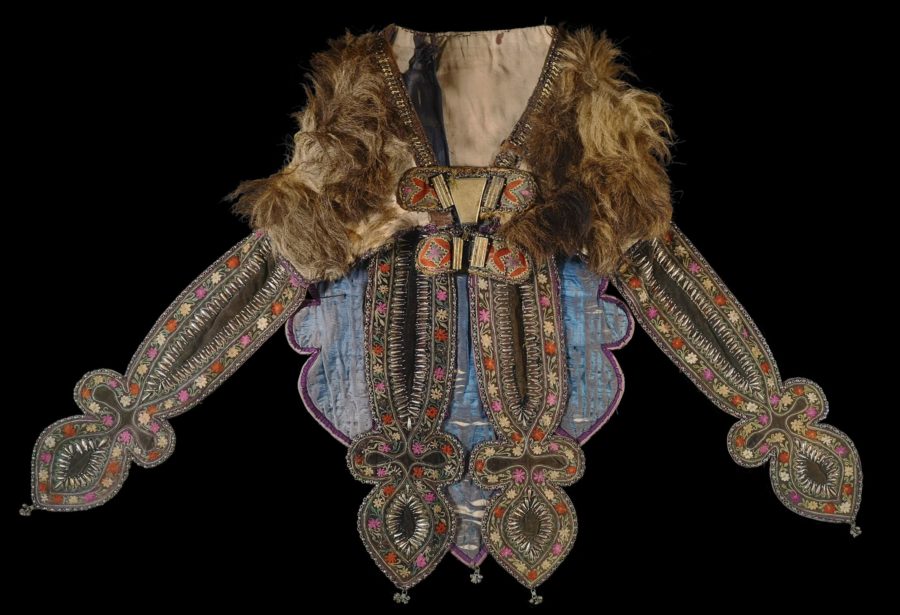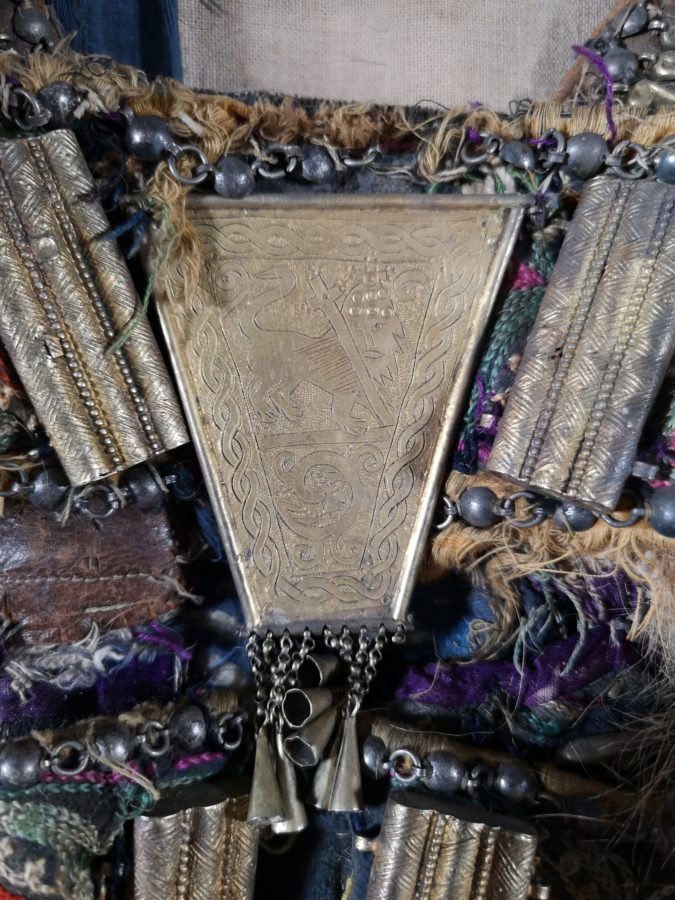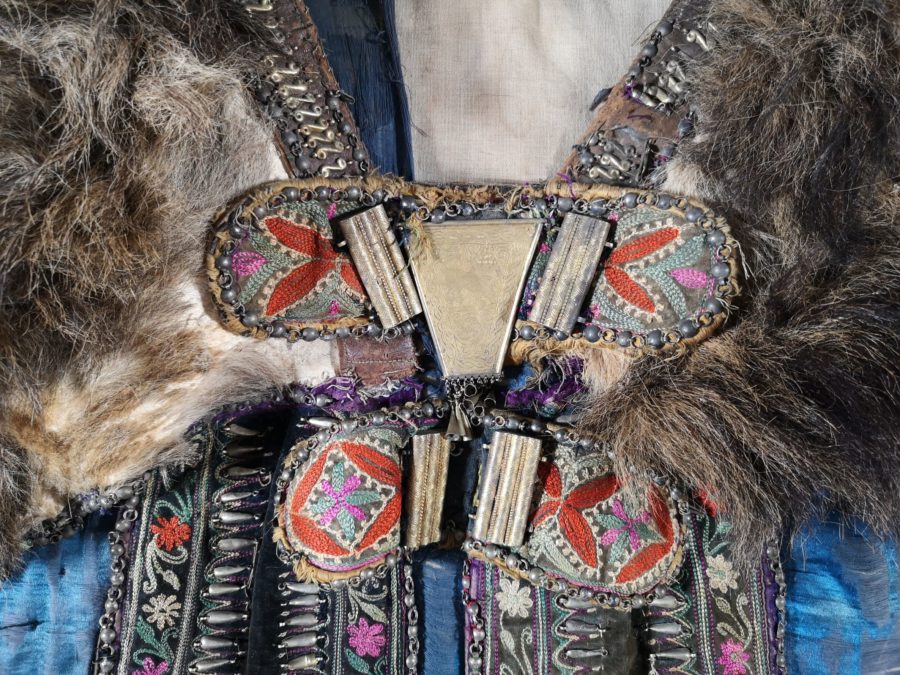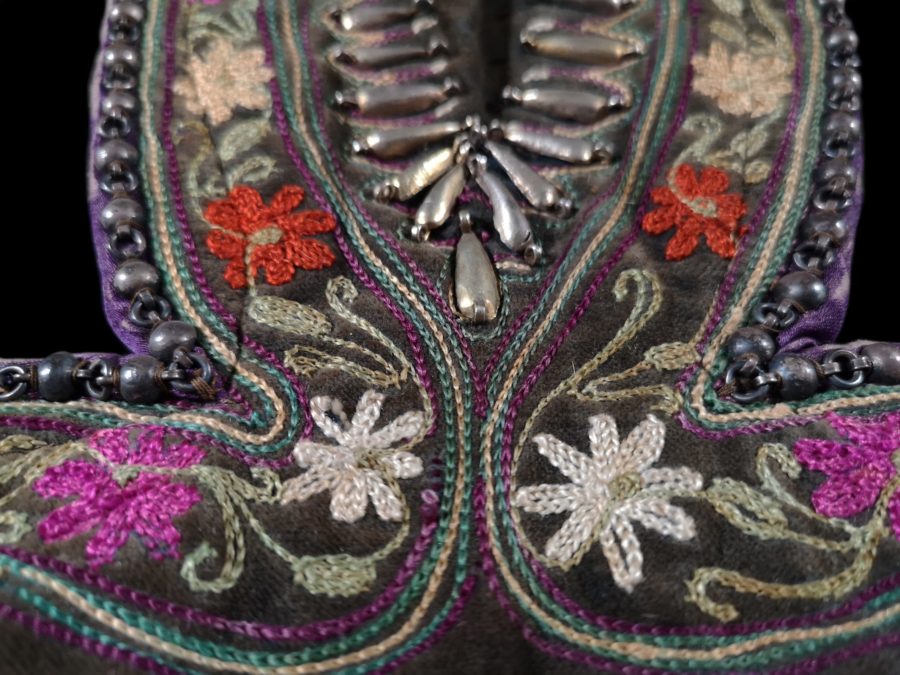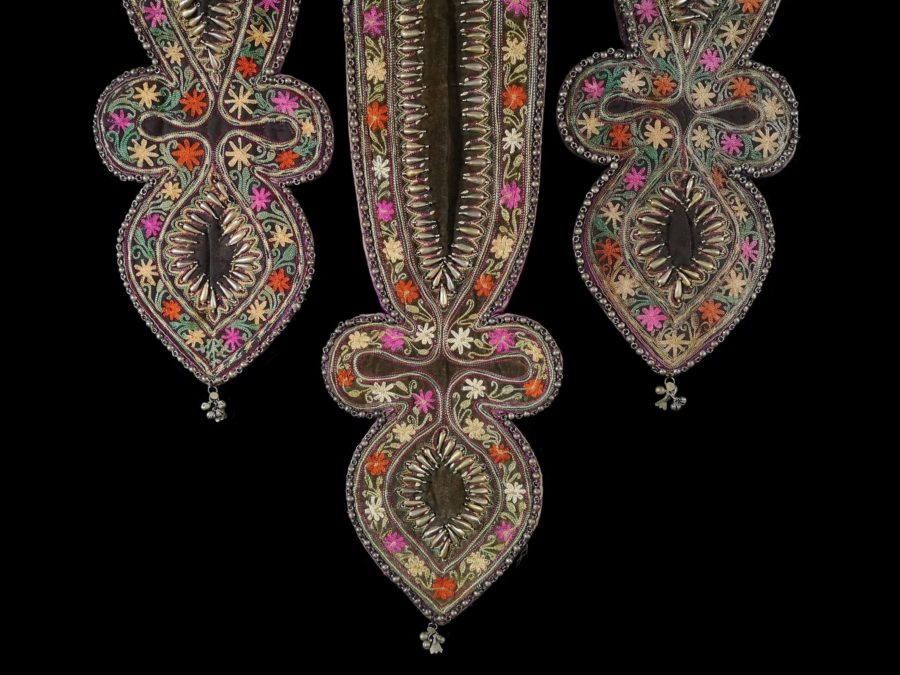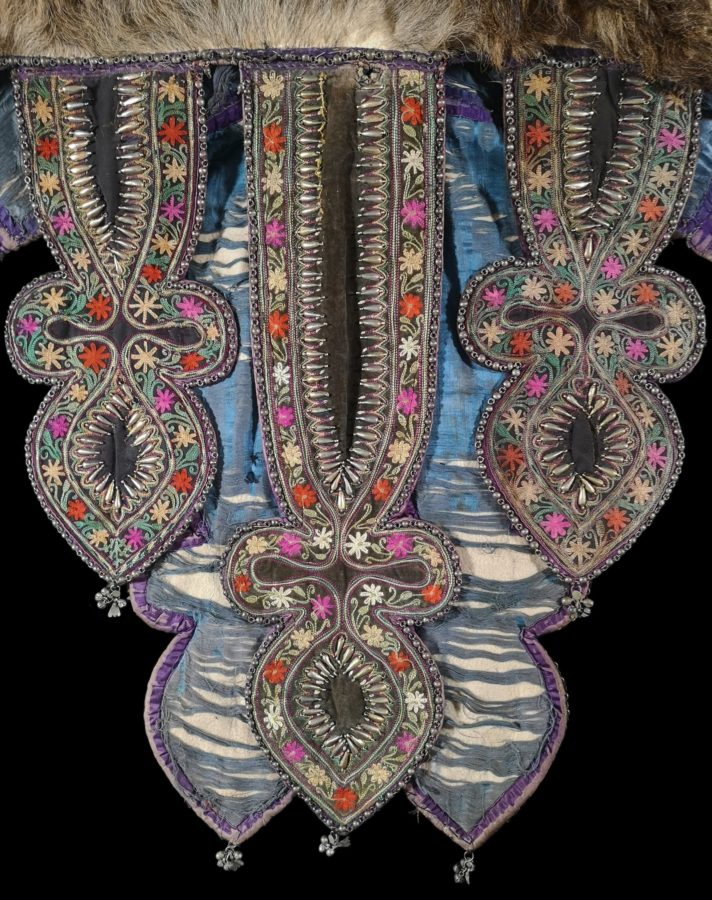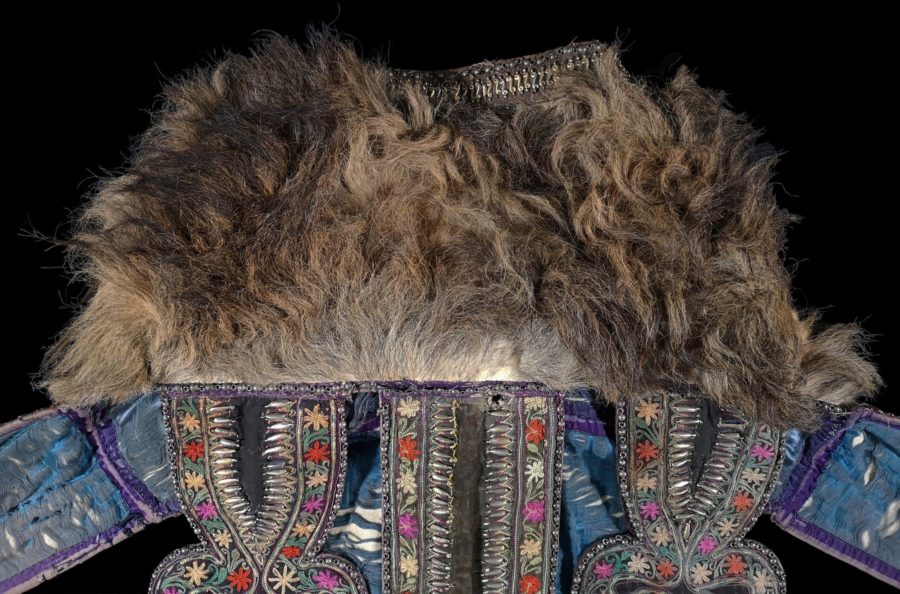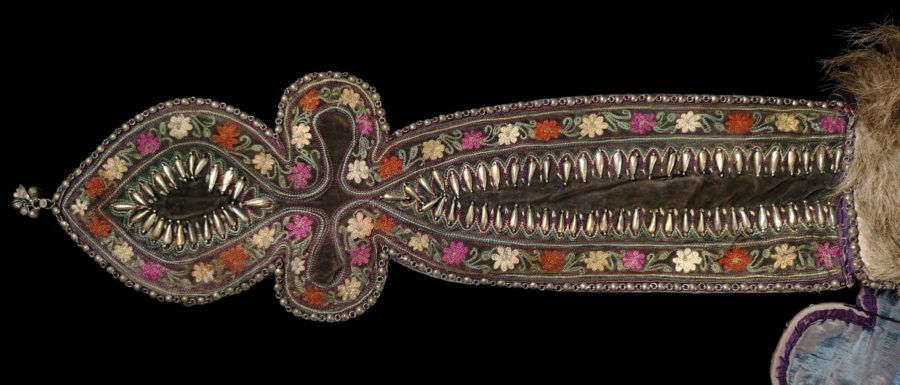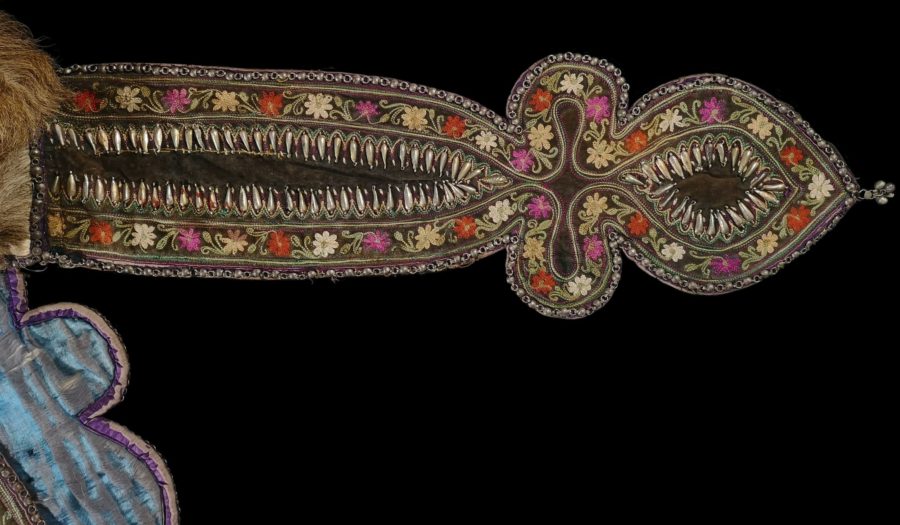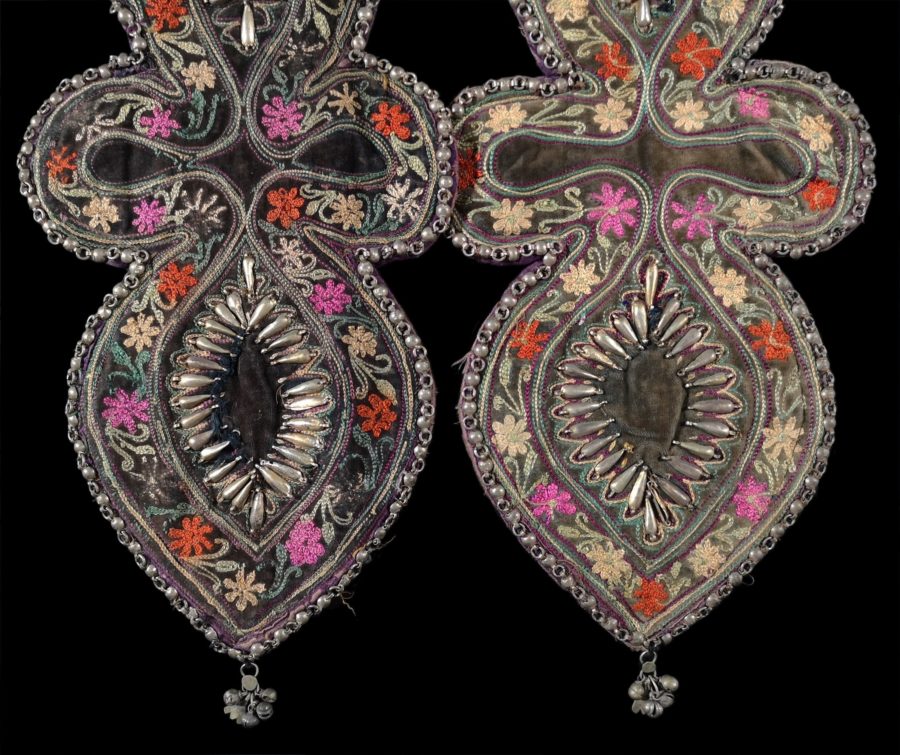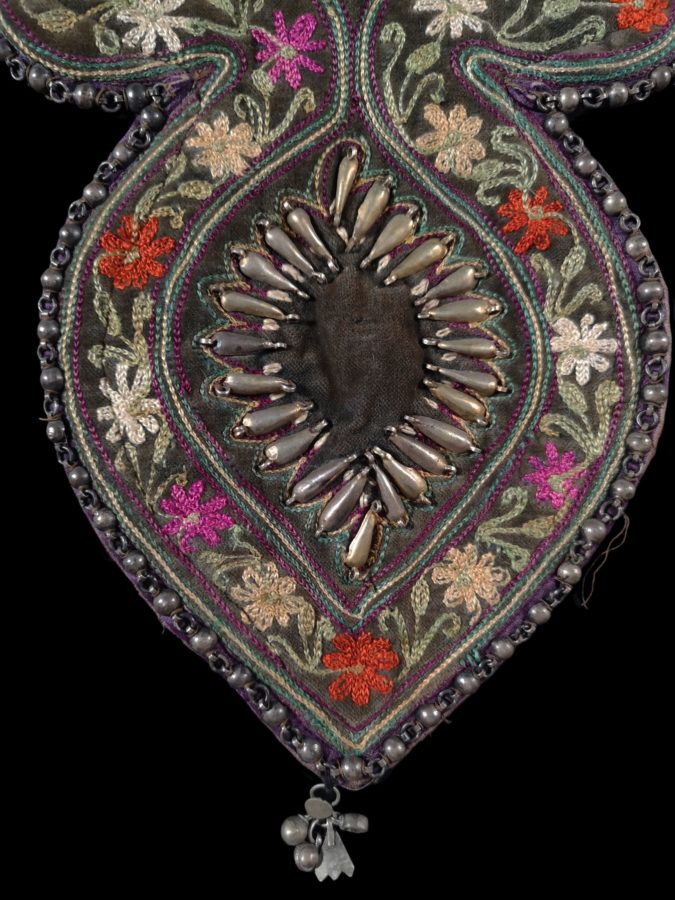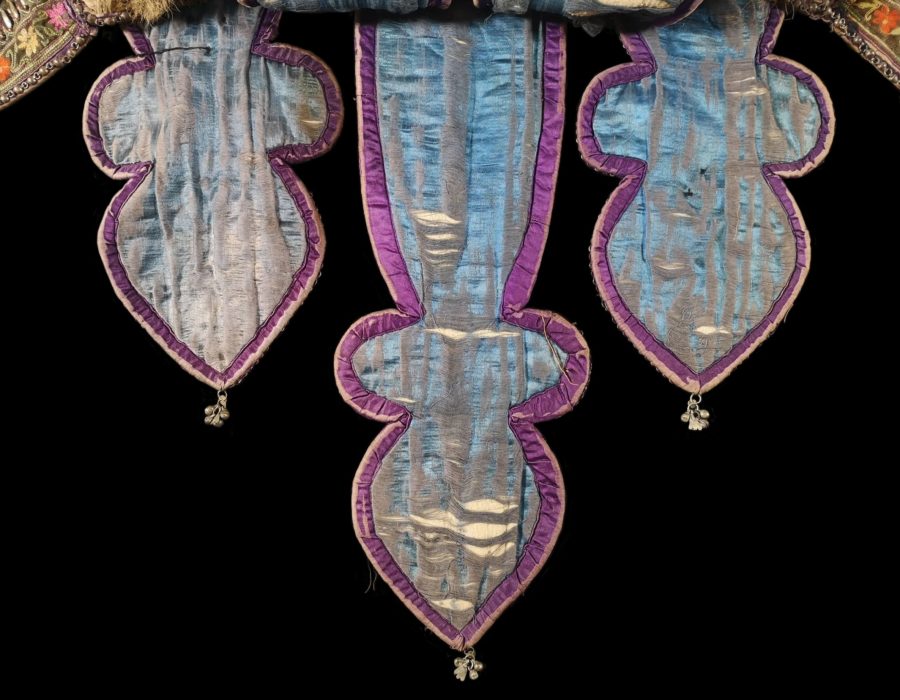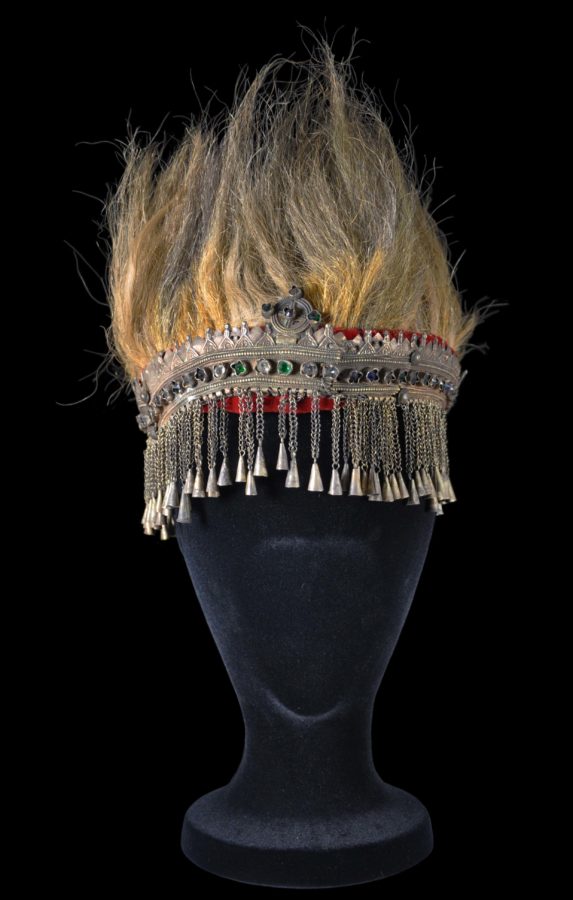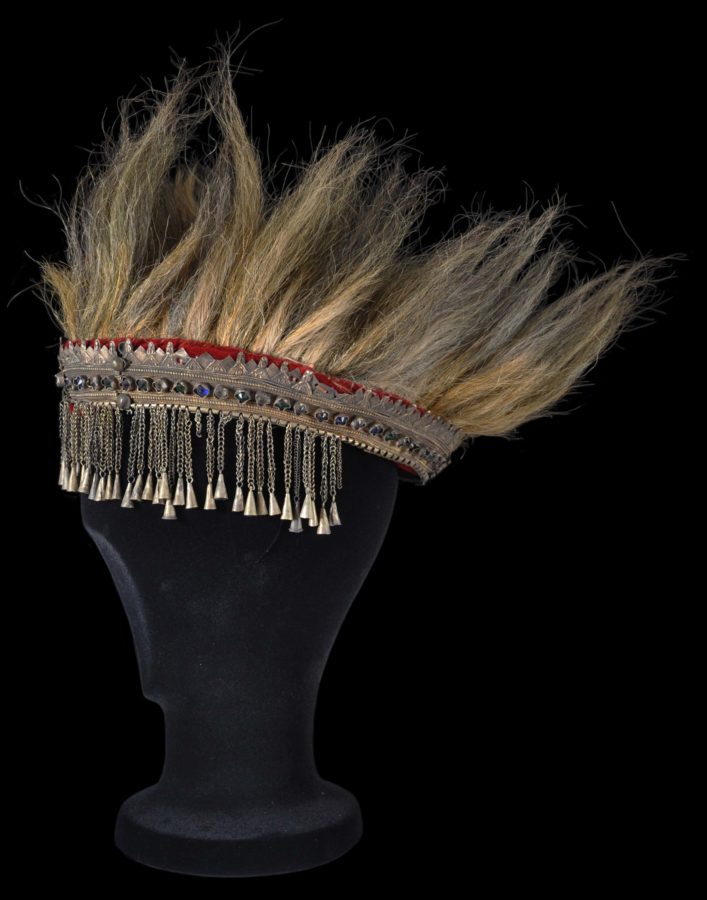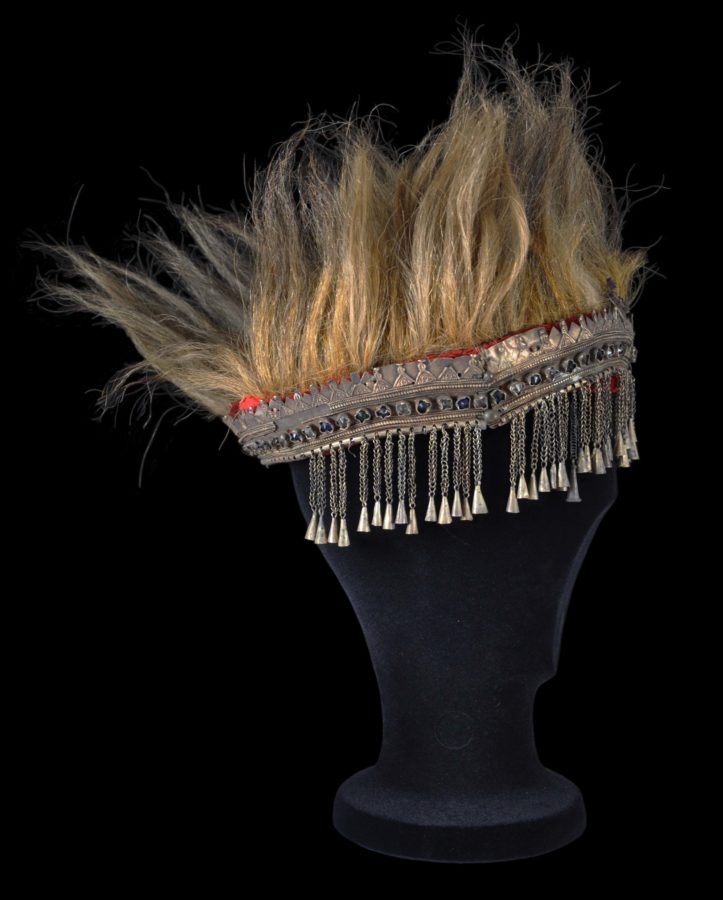This rare, extraordinary and extraordinarily well-preserved cape and crown is from the Ethiopian court and is of a type awarded by the Ethiopian emperor to an aristocratic warrior and lion hunter as a token of honour and bravery. In this case, the emperor almost certainly was Emperor Menilek II who was Emperor of Ethiopia (r. 1889-1913) and King of Shewa (r. 1866–89).
Killing in battle or while big game hunting was considered especially meritorious in Ethiopia (Biasio, 2004, p. 59). Successful warriors, who were awarded the right to wear such a cape and crown were honoured with titles and land. Investitures were held at the feast of the Exaltation of the Holy Cross (masqal), which is celebrated on September 14.
Such a cape and crown often were worn by the emperor himself to emphasise his bravery and position as a valiant warrior.
The cape (lamd) is of green velvet lined with blue-green and purple silk. There are five long straps and two shorter straps with trefoil-shaped endings. Each strap has borders of brocade – flowers and leafy scrolls in pink, purple, orange and cream silk stitching. Each strap is also sewn with dozens (hundreds overall) of gilded silver plaques and each terminates with a collection of pendant silver bells.
The front-piece of the cape is elaborate – the velvet component is fully embroidered. There is a central triangular gilded silver plaque that is engraved with a lion over which a sword has been superimposed – this being the Lion of Judah emblem. Small dangling conical silver tubes are suspended via small silver chain from the plaque. (The Lion of Judah traditionally is regarded as the symbol of the Israelite tribe of Judah from which the emperors of Ethiopia claimed descent. Ethiopia’s emperors – the ‘kings of kings’ – adopted the symbol as their own, and so it often was depicted in Ethiopian art and items associated with the royal family. The allusion relates to a verse from the Apocalypse (5, 5) in the Bible: ‘Behold, victorious was the lion from the line of Judah.’)
The shoulders of the cape are decorated with actual lion mane – symbolising the wearer’s feats as a successful lion hunter and also emphasising the Ethiopian throne’s linkages with the lion emblem, the lion being regarded as regal itself.
The lion mane crown (anfarro) comprises a gilded silver headband decorated with faceted, coloured stones or glass in high box settings and from which multiple silver chains which terminate with silver cones are suspended. The interior of the band is lined with padded red velvet. The top of the band is decorated with a tall lion mane crest.
This is the only example of a cape that we are aware of that has lion mane attached and which has its associated headdress, other than those seen in old back and white photographs worn in situ. Published examples in museum collections such as in Biasio (2004) do not have these features. The British Museum also has a cape (but not a matched crown.)
A related embroidered cape (but without the lion mane trim) is illustrated in Biasio (2004, p. 124).
The condition of the ensemble is very good particularly given its obvious age and the materials from which it is made. There are no holes of losses to the velvet or the embroidery of the cape. There are minor losses to the applied silver plaques here and there but the vast majority are still present. The lion mane is shedding hair in parts but is largely present. The interior silk lining has deteriorated (silk is particularly photo-sensitive) but this is largely not visible from the outside and for display purposes. There are losses to the dangling fringe of chains to the headdress. The back part of the headdress does not have this fringe of chains; it is not clear whether it did but it might have.
Overall, this is an exceptional, museum-quality item that is decorative and rare.
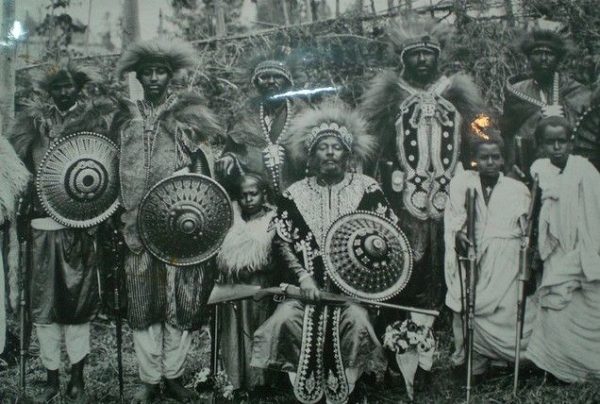
This image which dates to around 1896 shows Emperor Menelik (seated centrally) wearing a lamd and anfarro. Behind him are courtly warriors similarly attired.
References
Biasio, E., Majesty and Magnificence at the Court of Menelik: Alfred Ilg’s Ethiopia around 1900, Verlag Nueue Zurcher Zeitung, 2004.
Pankhurst, R. & L. Ingrams, Ethiopia Engraved: An Illustrated Catalogue of Engravings by Foreign Travellers from 1681 to 1900, Kegan Paul International, 1988.


